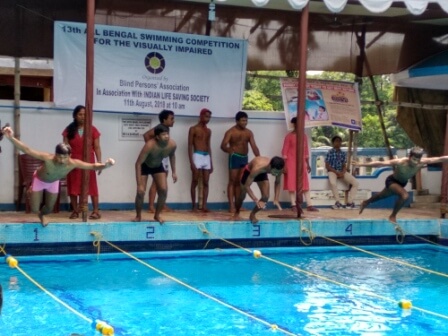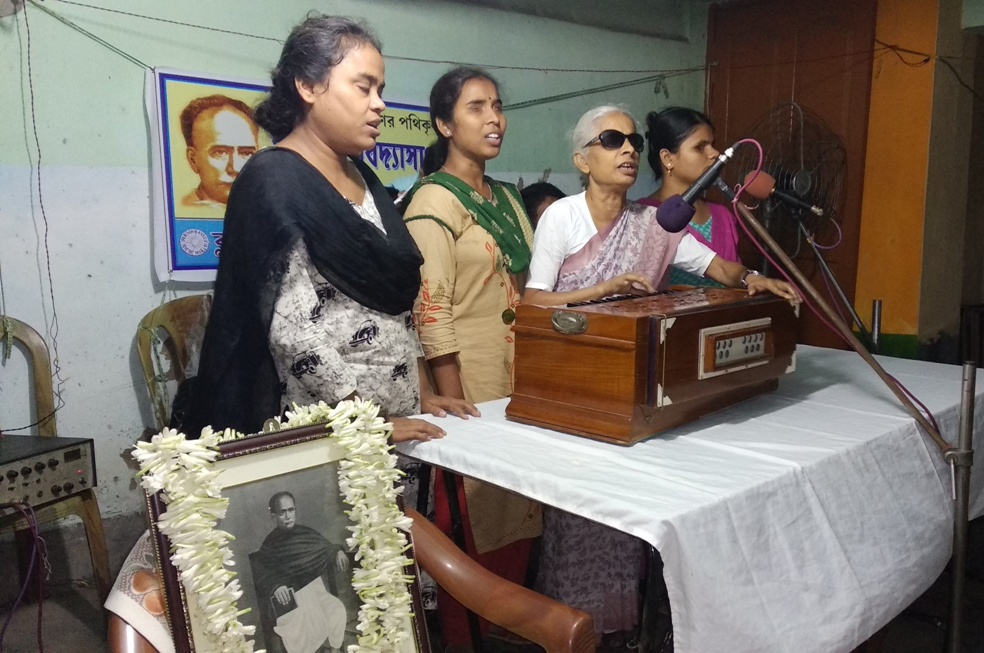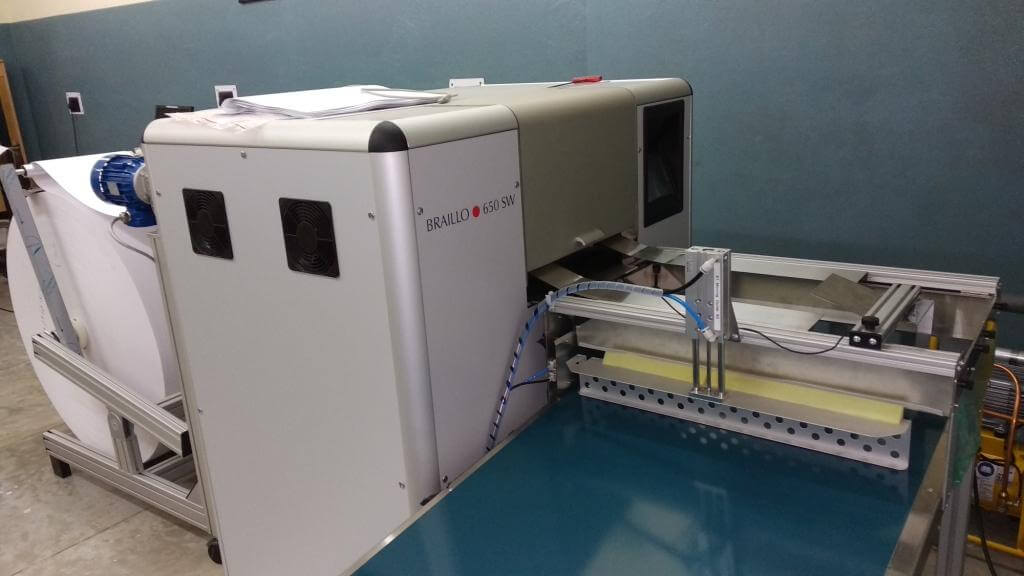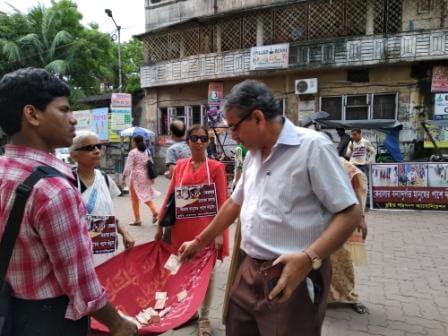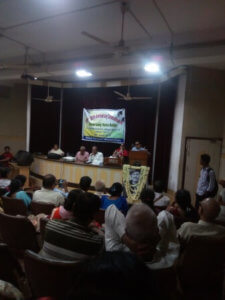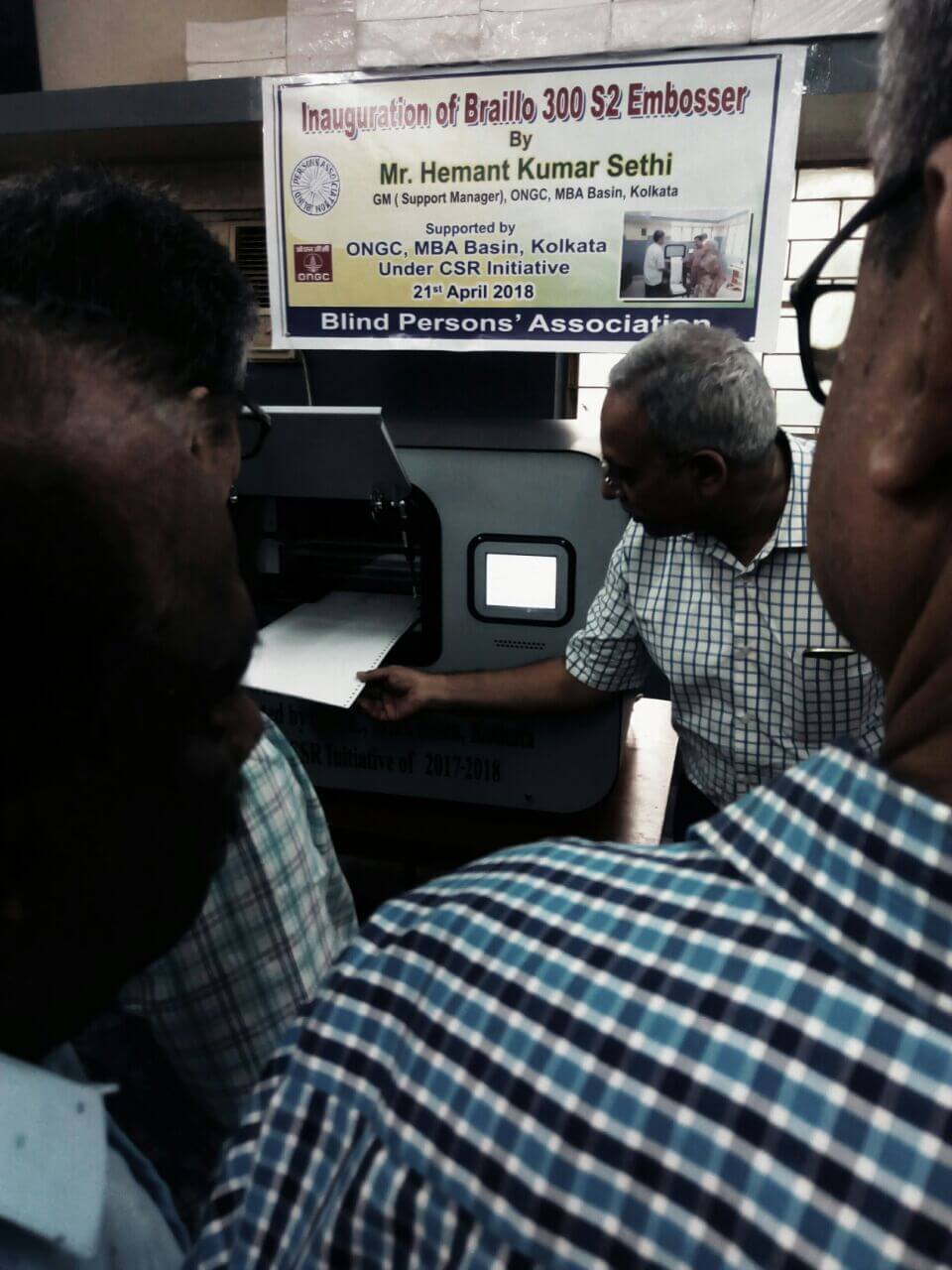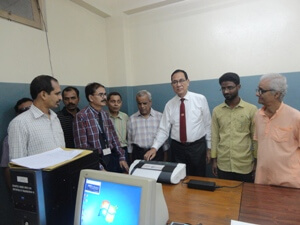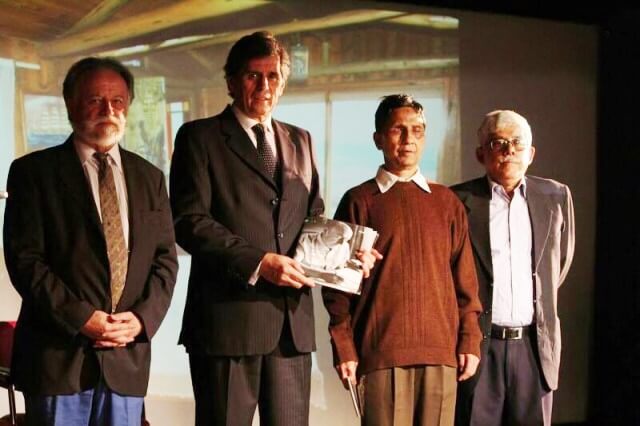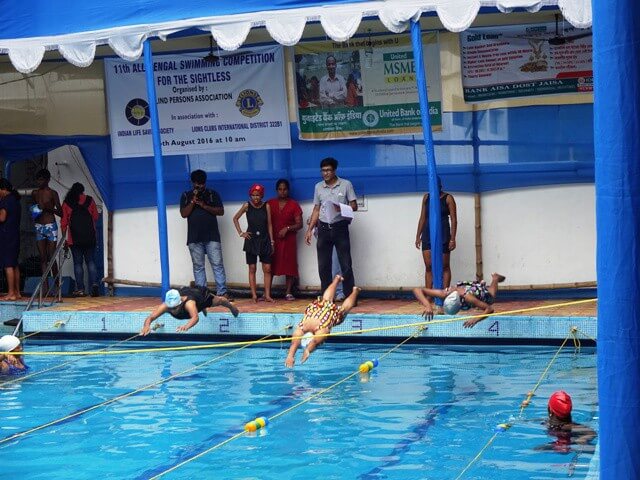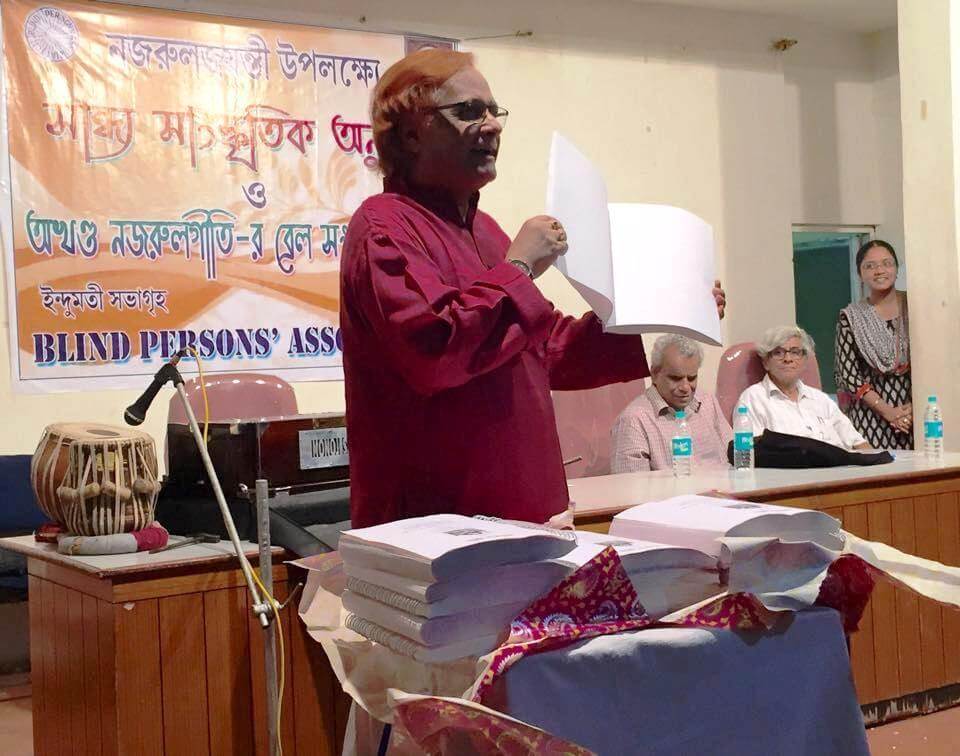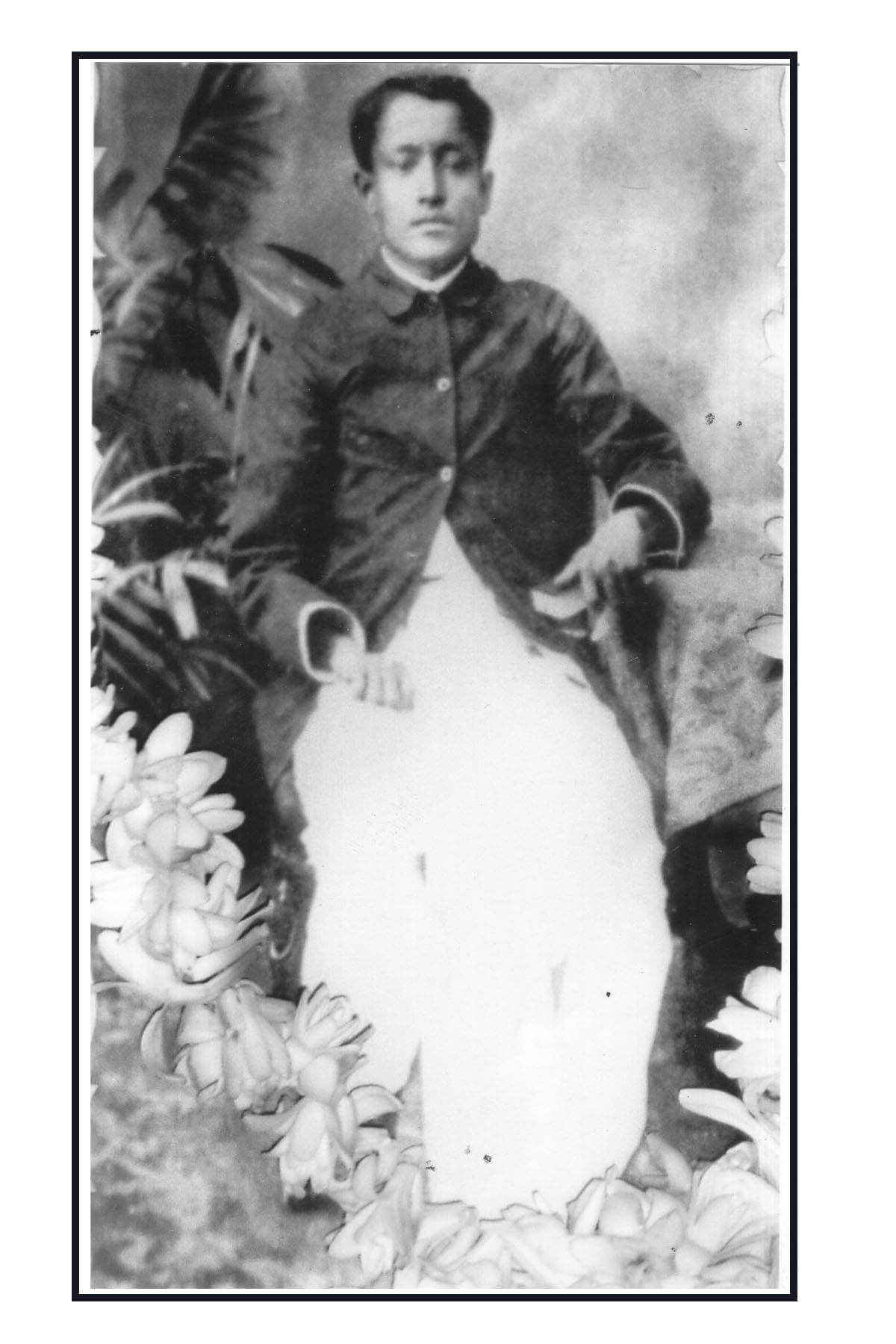The following article was published in the souvenir on the occasion of the inauguration of Lal Bihari Shah Braille Academia, the Braille press and library project of Blind Persons’ Association on January 4, 2003.
It often happens in history that the creator remains hidden under the overwhelming magnificence of his own creation. Lal Bihari Shah who founded Calcutta Blind School in the year of 1894 is seldom remembered today though the school he set up has retained its rank as a leading institution for the sightless in India with its century-old legend of glory. It was only the third blind school in India and the first in the East.
The part he played in introducing and promoting education among the sightless in India earns him the place of a pioneer in the pages of history. The life of the millions of sightless was hitherto destined to an existence of dependence. Begging was the only profession the sightless could undertake to earn their bread in these parts of the world till the early years of the twentieth century. In fact, the first pupil Lal Bihari Shah managed to find for his school was also a beggar whose parents depended on her alms for their bare subsistence. Lal Bihari had to pay compensation for the loss the poverty-stricken family incurred on account of this sightless boy’s education.
The best fortune a sightless person could dream of for himself was the security of a shelter in an orphanage maintained by the Christian missionaries on the charity of rich zamindars in the nineteenth-century India. Some attempts were made for the first time in the eighteen-forties at Bengal Military Orphan Institution in Calcutta to provide some sort of education to sightless orphans using carved letters. Some textbooks of Lucas type, a system of raised lettering on thick papers, were imported from London for this asylum. But this school did not last long and little remains of its details. It was the missionaries who brought Braille system to India in the later half of the nineteenth century. In 1886 merely eight years before the establishment of Calcutta Blind School, the first blind school in India was started at Amritsar by Miss Sarah Hewlett and Miss Furnaces Sharp.
Lal Bihari Shah’s achievement should be evaluated in the background of this state of affairs. Lal Bihari Shah was born in a poor Christian family at Hudalaksmihacha village in the district of Nadia on the 1st of December in 1853. His formal education was frequently interrupted on account of his poverty in spite of his mother’s eagerness. He received education in different schools which he often had to change following his change of fortune.
He was appointed teacher at the Wesleyan Mission School at Chitpur in Calcutta in 1877, but he did not continue his service here for long. The only mention worthy career he seriously and sincerely held on to for some time during this period of his life was as a teacher at Bhagoa of Santal Pargana. It was a Christian school. Some action of injustice on the part of the authorities injured his self-esteem and he relinquished his position without caring in the least for the maintenance of his wife and children. He sold vegetables in Calcutta for a livelihood at this stage.
It was a crucial time in the history of Bengal and India – The Renaissance reached its culmination. Born and brought up amidst the times of epoch-making changes, Lal Bihari, too, was impelled by the same spirit to perform some noble task for the sake of the society and the country. His acquaintance with Mr. Garthwait in 1894 brought a rare opportunity for him. He learned from him Braille system, still little known in India, and he not only mastered the system in a few days, he devised a Bengali Braille script based on systematic arrangement of Louis Braille’s six raised dots on thick paper. This Bengali Braille script, named Shah Braille after him, was in use till nineteen-sixties.
The credit of formulating the earliest Braille alphabet in Bengali goes to Shri Ramananda Chattopadhyay. Shri Chattopadhyay is remembered for his role as the editor of the Prabasi, a reputed Bengali monthly of the Renaissance period. Little information is available how this busy editor became interested in Braille system and devoted his time to developing a suitable code for its use in Bengali. We are also not sure how far Lal Bihari Shah owed his Shah Braille code to Ramananda Chattopadhyay.
Lal Bihari did not stop at learning Braille; he dedicated his life to teaching it to those who needed it most badly. His indomitable will did not let him give up the idea of educating the sightless in Braille system. He was a proof-reader at the Baptist Mission Press on a moderate income. He contemplated over starting a school all on his own. It was not an easy task to find out a sightless student. He must make arrangements for his escorting, food and clothing. A generous European lady whom Lal Bihari taught Bengali offered monthly assistance of Rs. 5 for one student. It was just enough in 1894 and he soon found a beggar-girl whose parents assented to send her to Lal Bihari’s school on the condition of daily payments of 2 annas and 2 paise as compensation.
The school started at 154 Kareya Road in a small house. The news spread all over India. Students came from Assam, Deoghar, Agra and even Delhi and he had to shift the school to a bigger house at 194 Lower Circular Road, He resigned his job as a proof-reader of the Baptist Mission Press to devote himself wholeheartedly to the school.
As his income was gone after quitting his job, he ran into financial problem. He had to support sixteen students apart from his own family. The London Missionary Society proposed to undertake the school with Lal Bihari Shah appointed a Headmaster. It was a lucrative offer in those days of hardships. But the school was not his business. It was his long-cherished dream which he painstakingly brought into reality. He refused the offer and accepted the challenge for conducting the school at any cost. Some of his acquaintance extended their cooperation in raising funds from the people.
By 1912 Lal Bihari Shah became totally blind. He left the official responsibilities to his son Sri Arun Kumar Shah and entirely devoted himself to Braille system. Braille books were not available at all in India. There was no Braille press here till the early sixties. Lal Bihari started manually copying into Braille form textbooks for the school. He continued to copy Braille books until he became too weak towards the end of this life.
Meanwhile the school had to be shifted to various places to accommodate more and more sightless students. Finally, a building complex of its own was setup at its present location at Behala in 1925. Here Lal Bihari Shah died on the 1st of July in 1928 at the age of seventy-five.
Sri Nagendranath Sengupta, who was the first sightless student in India to pass the Matriculation Examination in 1919, was a direct pupil of Lal Bihari Shah at Calcutta Blind School. Incidentally, Sri Sengupta was the first sightless graduate and the first sightless professor in India. He was also the founder-president of Blind Persons’ Association in 1946. Smt. Sabitri Ray Choudhury, the first sightless woman to pass the Matriculation Examination in India in 1938, was also a student of Calcutta Blind School. She, like many other pupils of this school, accepted teaching as a profession. Sightless students came here from different parts of the country. The flame Lal Bihari Shah kindled spread its light throughout the country lighting new flames.
Amiyo Biswas
You may also like listening to a Shrutikalpa editorial on Acharya Lal Bihari Shah on YouTube.
